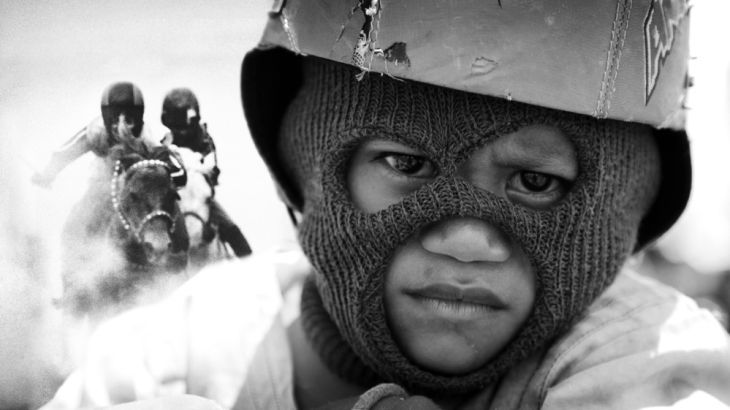
Riders Of Destiny: Risking Life as a Child Jockey in Indonesia
Seven-year-old Sila risks life and limb as a child jockey to provide for his family on the island of Sumbawa, Indonesia.
Seven-year-old Sila is a child jockey supporting his family financially on the remote island of Sumbawa, Indonesia.
With the high unemployment rate on Sumbawa, Sila’s parents no longer work because the money their young son earns takes care of the whole family.
Keep reading
list of 4 itemsChildren slide down destroyed Gaza mosque
Why mass kidnappings still plague Nigeria a decade after Chibok abductions
‘Over my dead body’, say Gambian mothers amid efforts to lift FGM ban
Each race poses an enormous risk to Sila and the other young jockeys who spend up to 10 days competing in several traditional horse racing tournaments each year. Injuries are common, deaths occur, and Sila is one of the most in-demand jockeys of all the young riders.
Seen through the eyes of Sila and a local photojournalist, the film Riders Of Destiny is a rare insight into how some of Indonesia’s most remote communities reconcile tradition with the need to survive.
FILMMAKER’S VIEW
By Michael Niermann
When I first came across photojournalist Romi Perbawa’s photos, I was enthralled by the powerful images of young boys. I could immediately sense the intensity and sadness in many faces, but also the pride these young riders felt. The photos really affected me.
I wanted to discover more about the child jockeys of Sumbawa. Who could imagine that four-year-old children have to risk their health and their lives as jockeys in horse races so that their families can survive? They have almost no protection, nothing on their feet and no saddle.
I showed the photos to the film’s producer. His reaction was similar to mine. I got in touch with Romi Perbawa. He was keen on the idea of making a documentary film for cinemas and invited us to come to Indonesia.
We flew to Sumbawa for 10 days of research work in May 2016. We saw the young jockeys riding – and falling off too. We stood right next to a starting box, helpless and shocked as we saw the measure of fear in the boys at moments like this. We very quickly realised that this was a story worth telling. The central question was, “How can I tell such a complex story, which has so many facets, in the most powerful and thorough manner?”
We met and got to know many jockeys and families and experienced many personal stories, which moved us deeply. Sila and Firman would become the central characters in our documentary film, because they embodied a great deal of the essence of this old tradition on Sumbawa.
Naturally, people’s main hope is to be successful in the races, because the more successful the children are, the more money they take home with them. However, we were much more concerned that many children have accidents. Each time that the phone rang in Indonesia, the first question we asked was, “Are all the boys still OK and unhurt?”
We wanted to tell this story, which hardly anybody knows about, because these young boys handle unimaginable pressures. They bear the financial responsibility for whole families at a young age and repeatedly face the risk of having a serious accident.
In the end, however, the child jockeys of Sumbawa are a mirror of what happens on a daily basis in different societies around the world. The most vulnerable are the ones who suffer most, so that others can make the greatest profits.